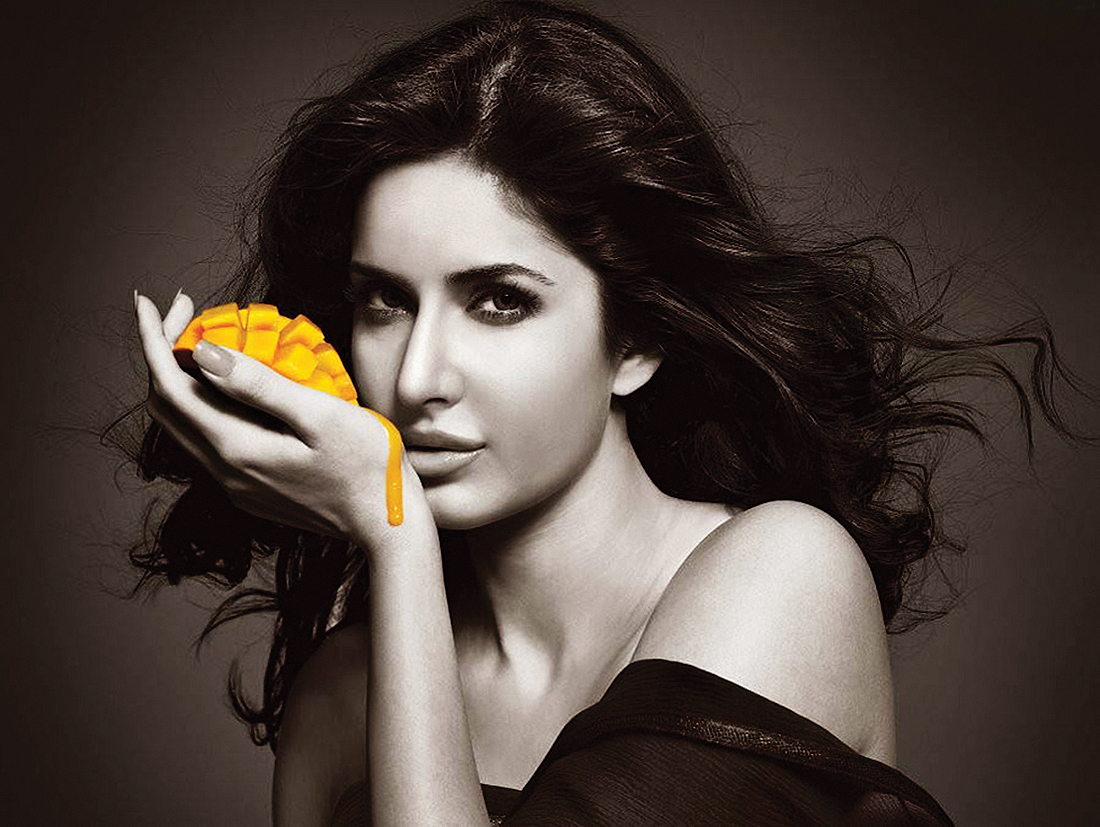From being a mother who single-handedly looks after the house and spends the day cooking and scrubbing utensils to being an object of desire for men who can entice them with deodorants, women are either domesticated or commodified in Indian advertisements
Ensuring that the child grows up to be ‘taller, stronger and sharper’ by having a health drink; making multigrain chapattis with flour made from the choicest of grains; using the most healthy edible oil for cooking to make sure that everyone in the family has a healthy heart; safeguarding children against diseases with antibacterial body soaps; struggling to clean the toilet seat; striving hard to wash off all the chiknai in utensils; washing clothes to keep ‘chamak naye jaisi’, mopping and cleaning the floor for a spotless finish; changing diapers and using the best baby care shampoo for ‘no tears’; feeding children the most nutritious breakfast; cooking food that children can’t say no to. Different brands, different products, but one thing remains common for all advertisement portraying such scenarios — women.
“Everyone automatically believes that this is our job. I am a homemaker but I do not wash utensils or clothes. What reality are they trying to put out? Also, even if it is part of the societal reality, shouldn’t they be trying to rip it apart to build a stronger narrative for women, instead of trying to showcase such stereotypical notions?” wonders 26-year-old Kalyani Bhargava, adding, “Even when there are advertisements of washing machines, they make it so obvious that it has to be a woman’s job to wash clothes using the machine.”
Can you think of any Indian advertisement of a car that portrays a woman as the central figure? Car advertisements mostly have men driving and women sitting next to them only as an eye candy. But a recent ad does show a couple choosing a car model and then the woman coolly saying, “I’ll drive.”

Outdoor products are mostly advertised by men. Domestic products like household appliances and food items continue to be advertised by women. Ads that are backdropped against a kitchen or against any other section of the house and ads that involve household chores like cooking, washing utensils and laundry, mostly have women promoting the product.
Surf Excel says, “Tumhaare haathon ka kaam badha diya (this has increased the work load for your hands),” declaring that washing clothes is quite obviously the woman’s work. In 2018, Engendered — a gender balance consultancy — found that 48% of the Diwali ads reinforced gender stereotypes and only 21% made an attempt to break it.
However, it will be wrong to say that there has been no advancement and no effort to break through the stereotypes. Ariel’s ‘share the load’ campaign lays emphasis on the idea that laundry should not be considered a woman’s job. “Advertisements need to evolve with the changing gender roles, instead of reinforcing such stereotypes. Advertisements should break such stereotypes and not strengthen such ideas that cultivate gender bias and inequality,” says Chetan Rawat, an employee of Rediffusion advertising agency.
Advertisements create ideas in people’s minds and the regular display of advertisements makes people start believing in the fictitious creation of media as the ultimate truth. “These created images are related to everything that we do in our daily lives to our views on different genders which have a profound influence on the behaviour of its audience. The question which arises is that, when people try to imitate something they had seen or heard, are they capable enough to segregate the right from the wrong? The advertisements when aired on TV are not able to restrict its audience to a select group which would be able to understand the underlying meaning of the message being conveyed through the commercial,” reads Dr Anshu Raina’s research paper, Representation of Indian Women in Advertisements.
It further suggests, “The result is an audience which varies from hoodlums, people of notorious minds and interests and people whose bent of mind is only based on use of women for personal or social exploitation. In the beginning, advertisements were once shown to sell a product, however, as years pass, advertisements begin to objectify women and begin to use women as a way to sell products. Will these roles stop putting women in such domesticating roles, or will women continue to be the subject to products?”
Indian advertisements not only put women in the domestic space with the household chores and products, but they also continue to portray women as commodities that are it to be attained. A commodity so easy that you can spray a deodorant to get it. Here too, lies the objectification and commodification of women that is deeply rooted in the Indian society.
From fat-shaming to skin-shaming, a look at the Indian advertisements can be enough to understand everything that is wrong with our society. Green tea, breakfast cereals, fairness products and cosmetics all promote the idea that women need to look a certain way to attract men’s attention. For instance, having Quaker Oats can make you slim, which is the only way to grab your husbands’ attention. The ad narrates, “Sales figure ki jagah, aaj Rajiv ne Priya ka figure notice karne ki shuruat ki (Today, Rajiv noticed Priya’s figure, instead of the sales figure).”
According to West and Zimmerman in their study Doing Gender, “… by relating to the characters within the commercials, individuals are able to make parallels between the televised world and their own lives. They further argue that if gender roles within commercials are perceived as realistic, an individual’s ideas about the correct way of ‘doing gender’ for him/herself and also for other genders may be changed. As advertisements often offer indications about appropriate gender behaviour, it becomes necessary to analyse what they are portraying.”
The dominant discourse for women seen in majority of advertisements is that of domesticity and motherhood. In most of the ads, the mother or the homemaker is shown to have the primary responsibility of childcare. The association between domesticity and femininity is a common pattern, especially in the commercials meant for cleaning products, kitchen products and baby products.
In an advertisement for health drink Pediasure, a young mother is seen worried about the height and weight of her son. She then chooses Pediasure for her child with which she fulfils her duty of being a responsible and intelligent mother. The tag line says, “Ham jaisi responsible aur intelligent mothers janti hain (Responsible and intelligent mothers like us know this).”
An advertisement for Dettol soap portrays a mother worried about her child’s health. The mother ends the advertisement by saying, “No one can protect the child except me.” This implies that it is only her duty and not her husband’s responsibility to nurture the children. There are many such advertisements that clearly construct motherhood as the most important aspect of a woman’s life.
Some ads — like that of Pril that shows a man ‘helping’ his wife in washing the dishes — do not effectively do away with such biased narratives. Instead, they tend to again highlight that it is a woman’s role and her husband can only help her with it. However, a recent ad for Scotch Brite scrub pad has taken the right shot. It shows a man washing dishes while the voiceover says, “Apni patni ka bojh apne kandhe par le kar, bohot bada ehsaan kia hai (You have taken the responsibility of your wife’s work on your shoulders, this is like a huge sacrifice).” To this, the man replies, “Sabka kaam hai, maine kardia toh kya badi baat hogayi (It is just work. What is the big deal if I did it?).” Such portrayals of women not only challenge the conventional portrayals in ads but also allow reconstruction of gender roles.
So, it can be said that some of the traditional stereotypes are fading away, giving way to more gender-neutral images. Still, women will tend to be treated as sensuous pegs, not sexual beings.





